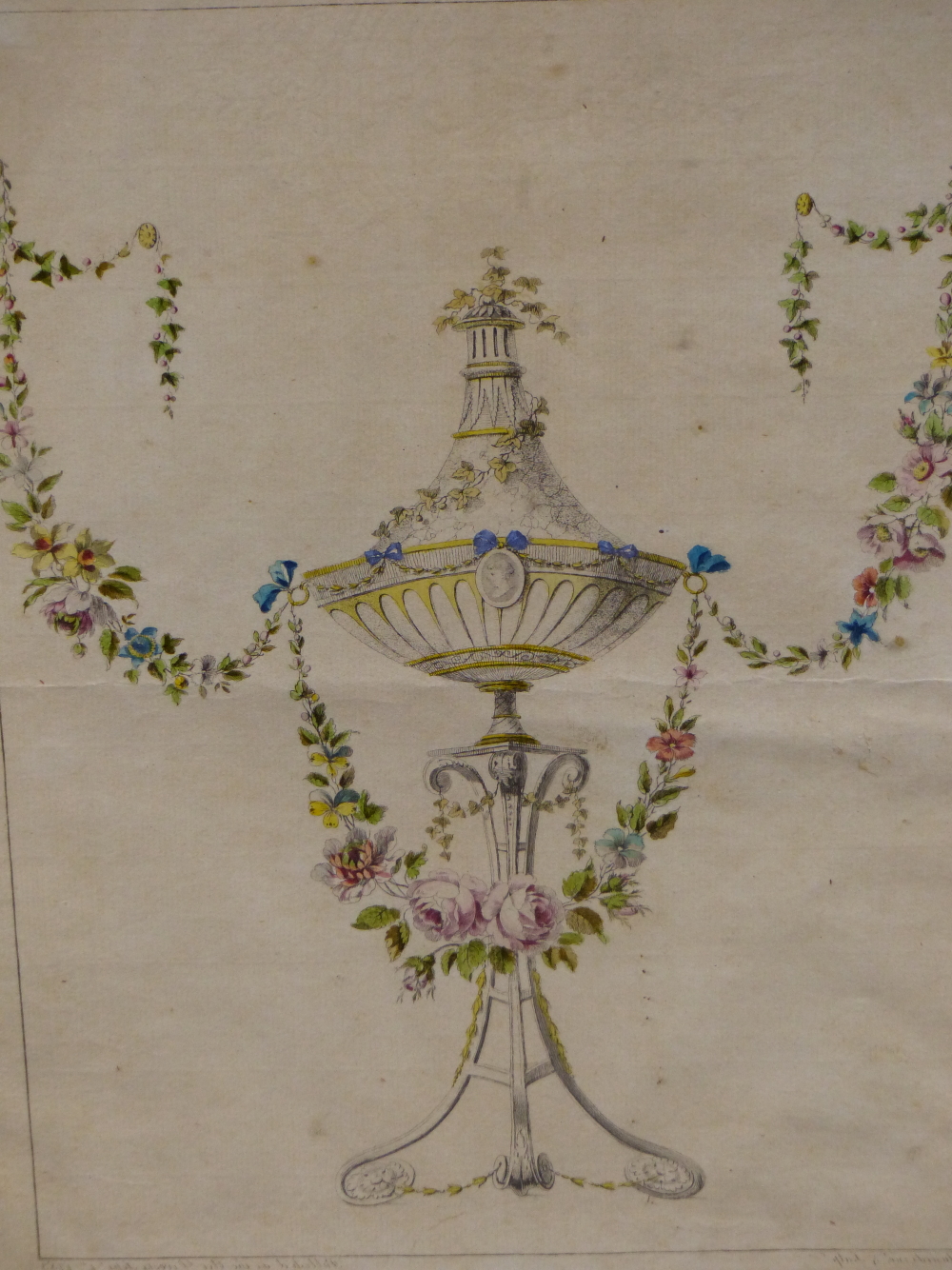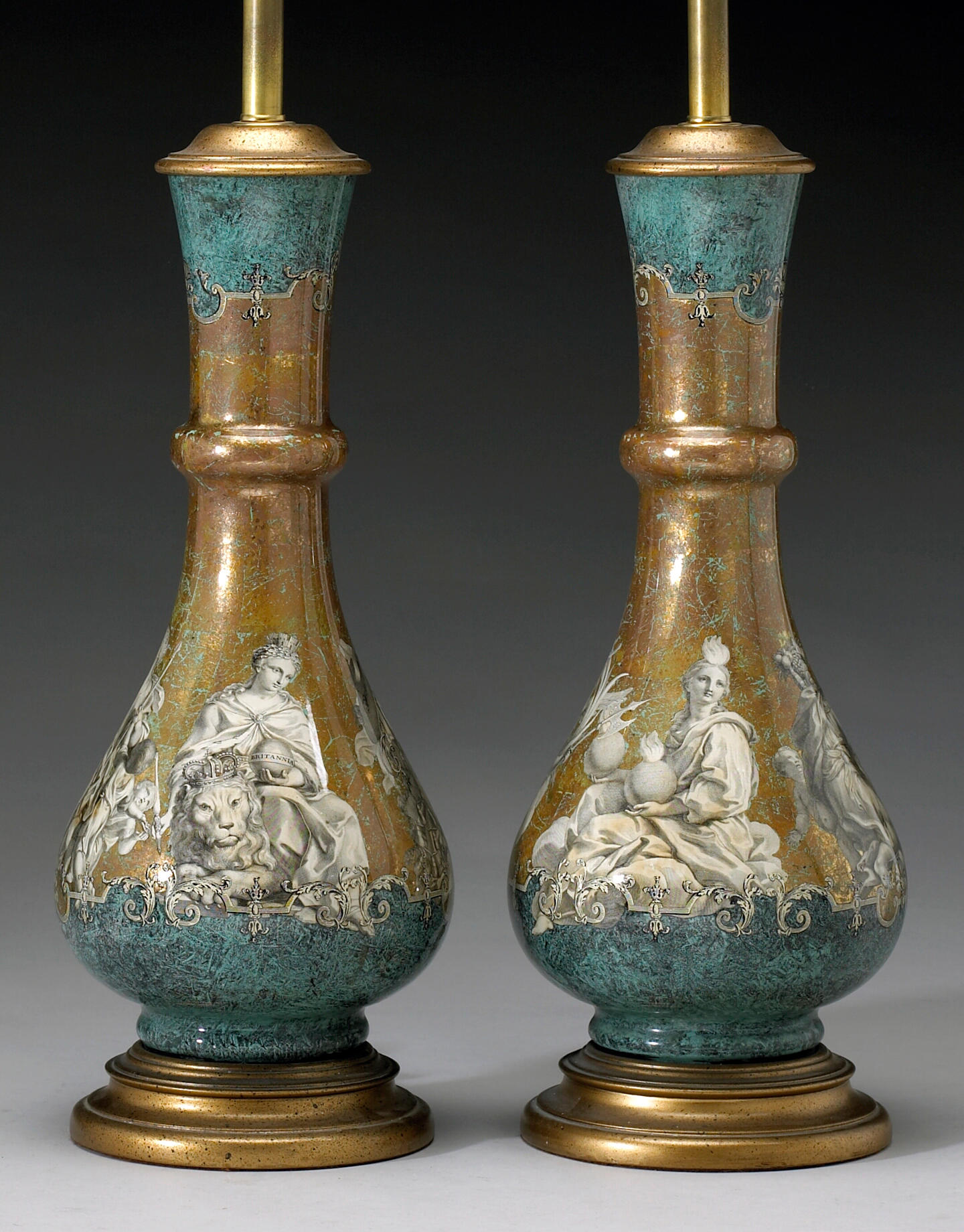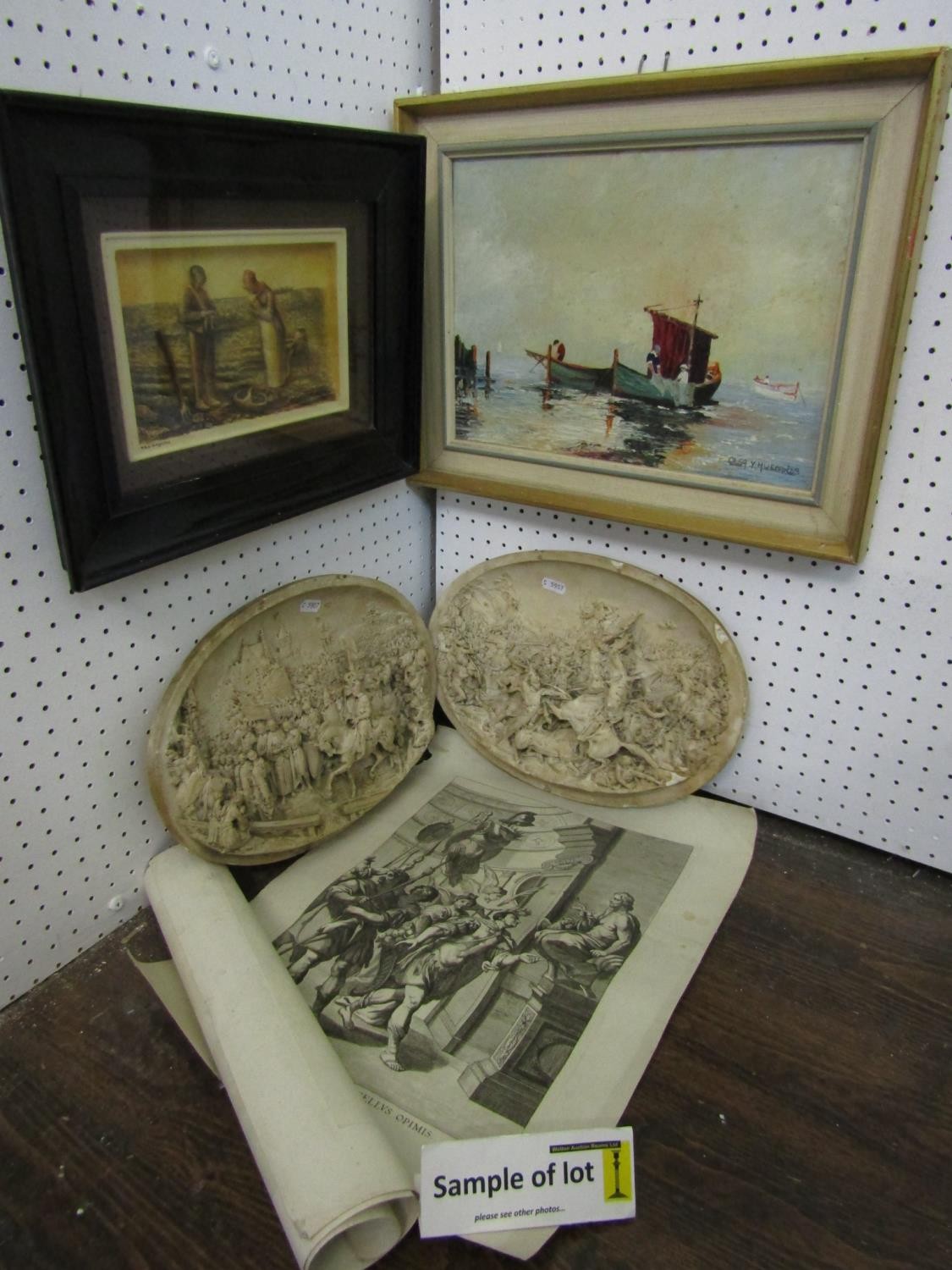Continental, 18th-19th centuries. A collection of six engravings with classical subjects, including Ein Bildsaule des Agrippa by unknown artist, marked XCVII p.311 u.r., on laid paper; Bildsaule der Minerva by unknown artist, marked XXII p.223 u.r., on laid paper; Ist eben das vorige by unknown artist, numbered 43 u.l., on laid paper; Abondantia by unknown artist, on laid paper; Statua di Pallade in basalte verde by unknown artist, numbered No. 54 l.r., on wove paper; and two etchings on same paper with western and northern elevation view of Acropolis, unknown artist, on wove paper; all unframed; 6.25 x 9 in. (Agrippa plate), 13 x 9.5 in. (Acropolis sheet). From The Old Master Print Collection of Johann Petz (Germany, 1818-1880), Descended in the Family of the Artist Petz was born at Lermoos, Tyrol, in 1818 and showed an early interest in wood carving and drawing. Petz worked as a shepherd for his family as a boy, but fled as a young man to a distant relative in Wildermiemingen to pursue the study of sculpture and drawing, which he did for three and a half years. In 1837, he decided to further his studies in Munich, and by chance he came into contact with the sculptor Konrad Eberhard (German, 1768-1859). Eberhard recognized Petz’s talent and took the young man on as a pupil, and several years later, secured for him a commission for the memorial statue for the famous German scholar Heinrich Klee (1800-1840). Petz’s design outlined a Gothic niche surmounted by a pinnacles and finials, which would house a sandstone sculpture of the Good Shepherd. This marked the beginning of the young artist’s career and established his reputation in Munich. Petz was influenced by Nazarene and Neo-Gothic movements in Bavaria, otherwise known as the Pre-Raphaelite movement in England. Petz would also go on to receive commissions for churches, altars, and tombstones in England and the United States, and was highly sought after as a sculptor and church designer. Several locations for which he designed churches and their decorations are Cham, Arnschwang, Seeon, Vilsbiburg, Isen, and Riedering. Most notably, he contributed the design for a sculpture of the Last Supper for the Frauenkirche in Munich in 1859, which was regrettably lost in air raids during World War II. During his career Petz also worked with Joseph Otto Entres (Germany, 1804-1870) and Joseph Knabl (Germany, 1819-1881). Provenance: The Old Master Print Collection of Johann Petz (Germany, 1818-1880) Condition: Agrippa: Small stains to all corners, toning, and creasing to l.r. Minerva: Wrinkling of paper allover, small stains around edges especially to left side, toning. Ist eben das vorige: Stain to l.c., creasing to u.r. and l.r., toning, edges of paper appear to be trimmed. Abondantia: Toning, wrinkling of paper allover, small pieces missing to u.r. and l.r., edges of paper appear to be trimmed, staining near u.l. and on lower right side. Statua di Pallade: Water stain to u.r., toning, ink spot l.c. Acropolis: Crease down center, taped repair to l.c., toning, and wrinkling of paper. For condition inquiries please contact cleveland@cowans.com. Please note that a condition report is only an opinion, given as a courtesy, and should not be treated as a statement of fact. Cowan's Auctions shall have no responsibility for any error or omission.
Continental, 18th-19th centuries. A collection of six engravings with classical subjects, including Ein Bildsaule des Agrippa by unknown artist, marked XCVII p.311 u.r., on laid paper; Bildsaule der Minerva by unknown artist, marked XXII p.223 u.r., on laid paper; Ist eben das vorige by unknown artist, numbered 43 u.l., on laid paper; Abondantia by unknown artist, on laid paper; Statua di Pallade in basalte verde by unknown artist, numbered No. 54 l.r., on wove paper; and two etchings on same paper with western and northern elevation view of Acropolis, unknown artist, on wove paper; all unframed; 6.25 x 9 in. (Agrippa plate), 13 x 9.5 in. (Acropolis sheet). From The Old Master Print Collection of Johann Petz (Germany, 1818-1880), Descended in the Family of the Artist Petz was born at Lermoos, Tyrol, in 1818 and showed an early interest in wood carving and drawing. Petz worked as a shepherd for his family as a boy, but fled as a young man to a distant relative in Wildermiemingen to pursue the study of sculpture and drawing, which he did for three and a half years. In 1837, he decided to further his studies in Munich, and by chance he came into contact with the sculptor Konrad Eberhard (German, 1768-1859). Eberhard recognized Petz’s talent and took the young man on as a pupil, and several years later, secured for him a commission for the memorial statue for the famous German scholar Heinrich Klee (1800-1840). Petz’s design outlined a Gothic niche surmounted by a pinnacles and finials, which would house a sandstone sculpture of the Good Shepherd. This marked the beginning of the young artist’s career and established his reputation in Munich. Petz was influenced by Nazarene and Neo-Gothic movements in Bavaria, otherwise known as the Pre-Raphaelite movement in England. Petz would also go on to receive commissions for churches, altars, and tombstones in England and the United States, and was highly sought after as a sculptor and church designer. Several locations for which he designed churches and their decorations are Cham, Arnschwang, Seeon, Vilsbiburg, Isen, and Riedering. Most notably, he contributed the design for a sculpture of the Last Supper for the Frauenkirche in Munich in 1859, which was regrettably lost in air raids during World War II. During his career Petz also worked with Joseph Otto Entres (Germany, 1804-1870) and Joseph Knabl (Germany, 1819-1881). Provenance: The Old Master Print Collection of Johann Petz (Germany, 1818-1880) Condition: Agrippa: Small stains to all corners, toning, and creasing to l.r. Minerva: Wrinkling of paper allover, small stains around edges especially to left side, toning. Ist eben das vorige: Stain to l.c., creasing to u.r. and l.r., toning, edges of paper appear to be trimmed. Abondantia: Toning, wrinkling of paper allover, small pieces missing to u.r. and l.r., edges of paper appear to be trimmed, staining near u.l. and on lower right side. Statua di Pallade: Water stain to u.r., toning, ink spot l.c. Acropolis: Crease down center, taped repair to l.c., toning, and wrinkling of paper. For condition inquiries please contact cleveland@cowans.com. Please note that a condition report is only an opinion, given as a courtesy, and should not be treated as a statement of fact. Cowan's Auctions shall have no responsibility for any error or omission.














Testen Sie LotSearch und seine Premium-Features 7 Tage - ohne Kosten!
Lassen Sie sich automatisch über neue Objekte in kommenden Auktionen benachrichtigen.
Suchauftrag anlegen